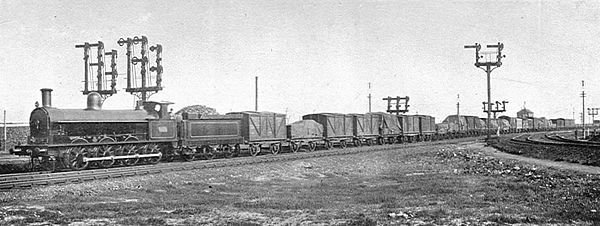Elasticity and Market Power:
From Monopoly to Competition
Christopher Makler
Stanford University Department of Economics
Econ 50: Lecture 15
pollev.com/chrismakler

If consumers respond to a 2% price increase by buying 3% less, demand at that price point is...?
Today's Agenda
- Overview of market structures
- Relationship between elasticity and marginal revenue
- Elasticity and profit maximization
- Profit maximization for a competitive firm
- A competitive firm's (short-run) supply curve
- Shift in short-run supply: changes in wages or capital
Market Structures


What were economists modeling when they came up with all these models?
Farmers producing commodities: price takers, no market power.
Railroads transporting goods:
price setters, lots of market power.
"Market Power" doesn't actually require a monopoly
Competition
- Lots of "small" firms selling basically the same thing
Market Power
- One or a few "medium" or "large" firms selling differentiated products
- Firms face essentially horizontal demand curve
- Firms face downward sloping demand curve
Monopoly as Metaphor
- True "monopolies" are rare
- Firms with some (at least local) market power are common
- We'll use "monopoly" as a metaphor
to analyze any firm that doesn't take prices as given,
and therefore faces a downward-sloping demand curve.
Revenue, Marginal Revenue, and Elasticity
Demand and Inverse Demand
Demand curve:
quantity as a function of price
Inverse demand curve:
price as a function of quantity
QUANTITY
PRICE
The total revenue is the price times quantity (area of the rectangle)
Note: \(MR < 0\) if
The total revenue is the price times quantity (area of the rectangle)
If the firm wants to sell \(dq\) more units, it needs to drop its price by \(dp\)
Revenue loss from lower price on existing sales of \(q\): \(dp \times q\)
Revenue gain from additional sales at \(p\): \(dq \times p\)
Marginal Revenue and Elasticity
(multiply first term by \(p/p\))
(definition of elasticity)
(since \(\epsilon < 0\))
Notes
Elastic demand: \(MR > 0\)
Inelastic demand: \(MR < 0\)
In general: the more elastic demand is, the less one needs to lower ones price to sell more goods, so the closer \(MR\) is to \(p\).
The more elastic demand is, the less MR is different than price.
Which part of a linear demand curve is more elastic?

Profit Maximization and Elasticity
We've just derived an elasticity
representation of marginal revenue:
Let's combine it with this
profit maximization condition:
Really useful if MC and elasticity are both constant!
Inverse elasticity pricing rule:
If a firm has the cost function $$c(q) = 200 + 4q$$ and faces the demand curve $$D(p) = 6400p^{-2}$$ what is its optimal price?
Inverse elasticity pricing rule:

One more way of slicing it...
Fraction of price that's markup over marginal cost
(Lerner Index)
What if \(|\epsilon| \rightarrow \infty\)?
Competitive (Price-Taking) Firms
Demand and Inverse Demand
Demand curve:
quantity as a function of price
Inverse demand curve:
price as a function of quantity
QUANTITY
PRICE
Special case: perfect substitutes
Demand and Inverse Demand
Demand curve:
quantity as a function of price
Inverse demand curve:
price as a function of quantity
QUANTITY
PRICE
Special case: perfect substitutes
For a small firm, it probably looks like this...
Marginal Revenue for Perfectly Elastic Demand
(multiply first term by \(p/p\))
(simplify)
(since \(\epsilon < 0\))
Note
Perfectly elastic demand: \(MR = p\)
Price
MC
\(q\)
$/unit
P = MR
12
24
Comparative Statics
Optimization
What is an agent's optimal behavior for a fixed set of circumstances?
Utility-maximizing bundle for a consumer
Profit-maximizing quantity for a firm
Profit-maximizing input choice for a firm
Comparative Statics
How does an agent's optimal behavior change when circumstances change?
Utility-maximizing bundle for a consumer
Profit-maximizing quantity for a firm
DEMAND
SUPPLY
When price is fixed at 12
For a general price
1. Costs and Revenues
2. Profit = total revenues minus total costs
3. Take derivative of profit function, set =0
Profit-Maximizing Output Choice when \(w = 8\), \(r = 2\), and \(\overline K = 32\)
NUMBER
FUNCTION
TR
TC
MR
MC
Take derivative and set = 0:
Solve for \(q^*\):
SUPPLY FUNCTION

When \(p = 4\), this function says that the firm should produce \(q = 8\).
If it does this...



When \(p = 12 , w = 8, \overline K = 32\)
For a general \(p, w\) and \(\overline K\)
1. Costs and Revenues
2. Profit = total revenues minus total costs
3. Take derivative of profit function, set =0
Now's let's also let wage and capital be a variable
NUMBER
FUNCTION
1. Costs for general \(w\) and revenue for general \(p\)
2. Profit = total revenues minus total costs
3. Take derivative of profit function, set =0
MARGINAL COST (MC)
"Keep producing output as long as the marginal revenue from the last unit produced is at least as great as the marginal cost of producing it."
Edge Cases
Edge Case 1:
Multiple quantities where P = MC
Edge Case 2:
Corner solution at \(q = 0\)
"The supply curve is the portion of the MC curve above minimum average variable cost"
Other Edge Cases to
Watch Out for On Exams
- Discontinuities
- Capacity constraints
- Quantities produced with capital
- Don't just trust formulas —
perform a gut check!
Summary
- All firms maximize profits by setting MR = MC
- If a firm faces a downward-sloping demand curve,
the marginal revenue is less than the price. - The more elastic a firm's demand curve,
the less it will optimally raise its price above marginal cost. - A competitive firm faces a perfectly elastic demand curve,
so its marginal revenue is equal to the price. - A firm's supply curve shows its optimal quantity to produce as a function of the price at which it can sell the good